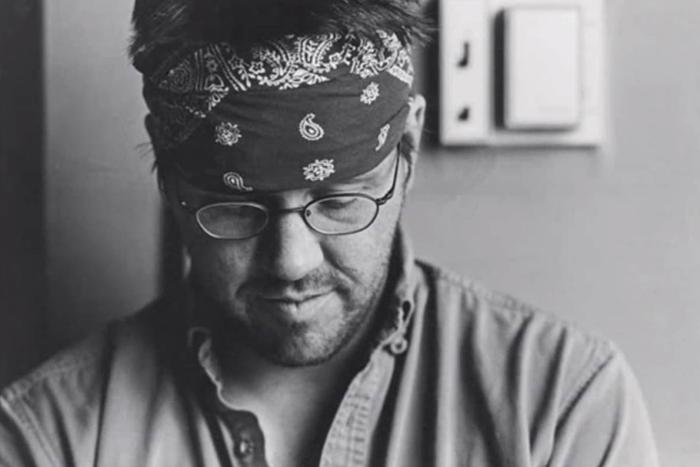This week's guest blogger is CS Richardson, author of the recently published The Emperor of Paris.
I am a writer of novels: it is what I do.
What I don’t do is make much of a living at it. Thus, under society’s fussy rules concerning putting a roof over one’s head and food in the bellies of one’s children, I am bound to pursue gainful employment.
So I design books for other writers. It pays the mortgage and buys the groceries and has thankfully done so for thirty-odd years.
Best guess: I’ve designed 1,500 books (and counting). Novels, novellas, and three-volume epics. Short stories, linked stories, snap fiction. Children’s books, self-help manuals, investment guides, ten-ways-to-lose-ten-pounds miracle diets, door-stop art books, slim poetry collections, celebrity tell-alls, political manifestos, cooking, gardening, new age, old history, religion, life, death. I’ve designed books about design. And through the accumulated legacy of all that paper, all that writing, all those authors, here’s what I’ve learned:
A cover designer is not a book designer. A cover designer creates small posters (swanky though they may be) that are held up by the books they are wrapped around. A book designer designs the thing entire, covers and interiors. A book designer worries as much about the paper stock and the bindery as they do about the use of sans serif. A really good designer can typeset the book. A gifted designer knows the historical origins of drop caps and as much about punctuation as the copy editor.
Speaking of which: en dashes (with spaces fore-and-aft) are marks of the devil. And to Messers Strunk & White: Style. Manuals. Are. Tyranny. Full. Stop.
The ugliest books in the world are self-published. Thankfully, like the quality of self-published writing, this is changing. The second ugliest are e-books. Which are not books at all, as far as I’m concerned. Attractive swipe-and-pinch word documents perhaps, admittedly convenient (like drive-thru’s and microwave popcorn) but woefully hideous books.
If a reader spends more time complaining about the size of the type on the page than they do reading the words themselves, then design has failed that reader. If the first thing a reviewer says about a novel is that it is “handsome,” the author is then within their rights to shoot the designer.
The writer writes, the editor edits, the sales rep pitches, the publisher publishes, the bookseller sells. But everyone thinks they can design. Which begets Design Law #1: the more people involved in the look of a book, the uglier it becomes.
When it comes to books, form follows function. To whit: if the function is provide an easily-read and engrossing novel that spans a thousand years of history and takes a million words to do so, than the form that novel takes must be large enough, with the clearest type possible, to handle the task. (Which returns us momentarily to e-books, where form—everything from a phone to the ironically named electronic “reader”—drives function. As though Miss Daisy, blissfully unaware of what a car should do, has suddenly jumped in the front seat and hit the gas.)
There is a theory in publishing that states one must be able to read a book cover from forty feet away. The trouble is there isn’t a bookshop in the world that has forty feet of sweeping vista where one can stand back and give it a try.
Black is no more a depressing colour for a book cover than white is cheery and uplifting. Audrey Hepburn wore black and she looked fantastic. Pink is no more for girls than blue is for boys. And yes, green covers can sell as well as any other shade in the spectrum.
An editor once told me he didn’t want the murder mystery he was publishing to have a “gruesome” cover. This despite the fact that the novel’s protagonist dispatched her victims by disembowelment then fried up the entrails with bacon and capers and fed the lot to her yappy dog. Because a book is “emotional” does not mean it should look like a sympathy card from your grandmother. So, if the book concerns a circus of dancing fish and a one-eyed midget ringmaster, one needn’t put mambo-mad mahi-mahi and a diminutive cyclops on the cover. Put another way: if a cover is obvious and redundant and banal and clichéd (pink v. blue?) and treats the reader like a moron, the reader will probably do something moronic. Like not buy the book.
Publishers will spend days, weeks, months fretting over a cover design. The average browser in a bookshop will spend less than a second contemplating same. Half of them will hate it. The other half are probably in the wrong section of the shop to begin with.
At the end of the day, it is the writer’s book. Designers should remember this, stop getting in the way, and serve the work.
I do not design my novels (though I like to think I know how). With rare exception, I think a writer who designs their own work should be worrying about more important things. Like writing it.
And the cover of my latest novel? Green.






